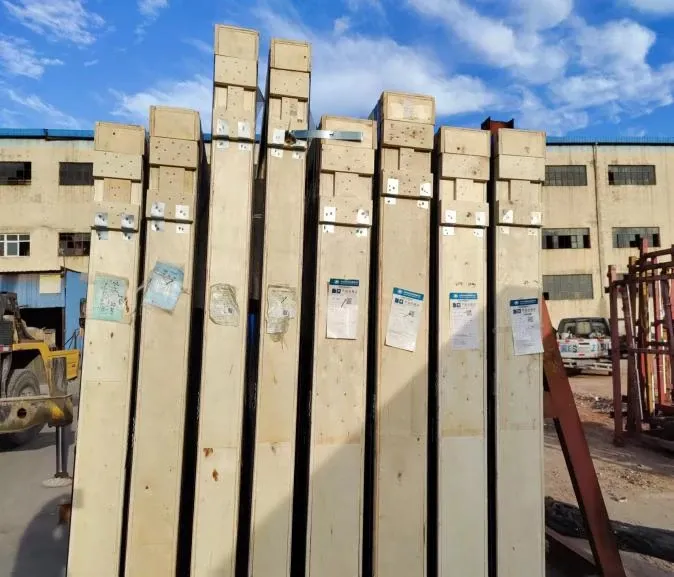Nov . 16, 2024 21:56 Back to list
toughened laminated glass suppliers
Understanding Toughened Laminated Glass A Comprehensive Guide for Suppliers
Toughened laminated glass, also known as tempered laminated glass, has become an essential material in various industries, including construction, automotive, and interior design. Its unique properties make it an ideal choice for applications that require enhanced safety, durability, and aesthetic appeal. This article aims to provide an overview of toughened laminated glass, its benefits, and considerations for suppliers in the market.
What is Toughened Laminated Glass?
Toughened laminated glass is a type of safety glass that has been treated to improve its strength and durability. It consists of two or more layers of glass that are bonded together with a transparent interlayer, typically made of polyvinyl butyral (PVB) or ethylene-vinyl acetate (EVA). The glass is first thermally treated (tempered) to increase its resistance to impact and thermal stress, and then laminated to provide added safety and durability.
The unique manufacturing process involves heating the glass to high temperatures and then rapidly cooling it, creating a compressive stress on the surface and tension in the core. When broken, toughened glass shatters into small, blunt pieces rather than sharp shards, reducing the risk of injury. The interlayer in laminated glass holds the glass layers together, even when broken, preventing the glass from collapsing and providing additional safety.
Advantages of Toughened Laminated Glass
1. Safety and Security One of the primary benefits of toughened laminated glass is its ability to enhance safety. In the event of breakage, the interlayer ensures that fragments adhere to the laminated layer, minimizing the risk of injury. This feature is particularly crucial in commercial buildings, schools, and public spaces where safety is a priority.
2. UV Protection The interlayer used in laminated glass blocks harmful ultraviolet (UV) rays, protecting interiors from fading and damage caused by sun exposure. This characteristic is valuable for homes and buildings with valuable furnishings and artwork.
3. Sound Insulation Toughened laminated glass also provides sound insulation, making it an ideal choice for urban environments or areas with high noise pollution. The additional layer of the interlayer helps to absorb sound waves, creating a quieter indoor environment.
4. Thermal Efficiency This type of glass can contribute to energy efficiency by reducing heat loss and improving insulation. By controlling the temperature inside a building, toughened laminated glass can lead to lower energy costs and a more comfortable living or working space.
toughened laminated glass suppliers

5. Aesthetic Appeal Toughened laminated glass is available in various finishes, colors, and thicknesses, allowing architects and designers to achieve their desired look while maintaining functionality. Its clarity and modern appearance can enhance the aesthetic value of any project.
Considerations for Suppliers
As a supplier of toughened laminated glass, several key considerations should be kept in mind
- Quality Control Ensure that the glass meets industry standards and regulations for safety and performance. Regular testing and certification can boost credibility and customer trust.
- Customization Options Offer customization options, such as different thicknesses, sizes, and colors, to meet diverse customer needs. Flexibility in product offerings can be a competitive advantage.
- Technical Support Provide technical support and expertise to clients regarding installation and application. Educating customers about product features and benefits can lead to improved customer satisfaction.
- Sustainability As consumers increasingly prioritize sustainability, consider offering environmentally friendly glass products. This could include sourcing materials responsibly and highlighting energy-efficient manufacturing processes.
- Market Trends Stay informed about industry trends and technological advancements that may impact the market for toughened laminated glass. Being aware of emerging technologies can help suppliers adapt and innovate their product offerings.
Conclusion
Toughened laminated glass is a versatile and essential material in today’s market, providing safety, durability, and aesthetic versatility. As suppliers navigate this dynamic landscape, understanding the benefits, compliance standards, and customer preferences will be crucial for success. By focusing on quality, customization, and sustainability, suppliers can position themselves as leaders in the toughened laminated glass industry, meeting the evolving needs of their clients and contributing to safer, more efficient, and visually appealing environments.
-
Safety and Style with Premium Laminated Glass Solutions
NewsJun.24,2025
-
Reinvents Security with Premium Wired Glass
NewsJun.24,2025
-
Premium Float Glass Line for Modern Architecture
NewsJun.24,2025
-
Low Emissivity Glass for Energy-Efficient Architecture
NewsJun.24,2025
-
High-Performance Insulated Glass Solutions for Modern Architecture
NewsJun.24,2025
-
Elevates Interior Style with Premium Silver Mirror
NewsJun.24,2025
Related PRODUCTS














